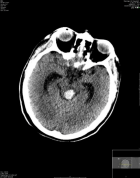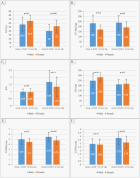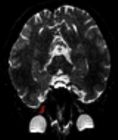Abstract
Case Report
Late discover of a traumatic cardiac injury: Case report
Benlafqih C, Bouhdadi H*, Bakkali A, Rhissassi J, Sayah R and Laaroussi M
Published: 19 August, 2019 | Volume 4 - Issue 2 | Pages: 100-102
Blunt chest trauma leads to a wide range of lesions, relatively minor parietal injuries to potentially fatal cardiac lesions, making diagnosis and management difficult. The diagnosis is currently facilitated by imaging, however, these lesions may go unnoticed and be discovered late through complications.
We report the case of a neglected heart wound revealed by a heart failure. This case is notable due to a favourable outcome despite a delay in diagnosis due to a lack of pericardial effusion and the absence of cardiac symptoms, and a long delay from injury to appropriate treatment in the presence of a penetrating cardiac wound deep enough to cause a muscular ventricular septal defect and lacerate the anterior mitral leaflet.
Read Full Article HTML DOI: 10.29328/journal.jccm.1001048 Cite this Article Read Full Article PDF
Keywords:
Cardiac injury; Traumatic mitral regurgitation; Ventricular septal defect
References
- Connelly TM, Kolcow W, Veerasingam D, DaCosta M. A severe penetrating cardiac injury in the absence of cardiac tamponade. Interact Cardiovasc Thorac Surg. 2017; 24: 286-287. PubMed: https://www.ncbi.nlm.nih.gov/pubmed/27789730
- Kaljusto ML, Skaga NO, Pillgram-Larsen J, Tønnessen T. Survival predictor for penetrating cardiac injury; a 10-year consecutive cohort from a scandinavian trauma center. Scand J Trauma Resusc Emerg Med. 2015; 23. PubMed: https://www.ncbi.nlm.nih.gov/pubmed/26032760
- Christie-Large M, Michaelides D, James S. Focused assessment with sonography for trauma: the FAST scan. Trauma. 2008; 10: 93-101.
- Leite L, Gonçalves L, Vieira DN. Cardiac injuries caused by trauma: Review and case reports. J Forensic Leg Med. 2017; 52: 30-34. PubMed: https://www.ncbi.nlm.nih.gov/pubmed/28850860
Figures:
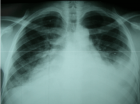
Figure 1
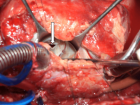
Figure 2
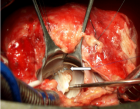
Figure 3
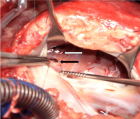
Figure 4
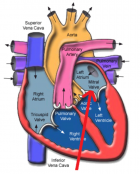
Figure 5
Similar Articles
-
Late discover of a traumatic cardiac injury: Case reportBenlafqih C,Bouhdadi H*,Bakkali A,Rhissassi J,Sayah R,Laaroussi M. Late discover of a traumatic cardiac injury: Case report. . 2019 doi: 10.29328/journal.jccm.1001048; 4: 100-102
-
Prevalence of congenital heart diseases among primary school children in the Niger Delta Region of Nigeria, West AfricaUjuanbi Amenawon Susan*,Tabansi Petronilla Nnena,Otaigbe Barbara Edewele. Prevalence of congenital heart diseases among primary school children in the Niger Delta Region of Nigeria, West Africa. . 2019 doi: 10.29328/journal.jccm.1001056; 4: 144-149
Recently Viewed
-
Relationship between Fertility Diet Score Index Items and Ovulation in Women with Polycystic Ovary Syndrome: A Narrative ReviewHadis Alimoradi,Faezeh Mashhadi,Ava Hemmat,Mohsen Nematy,Maryam Khosravi,Maryam Emadzadeh,Nayere Khadem Ghaebi,Fatemeh Roudi*. Relationship between Fertility Diet Score Index Items and Ovulation in Women with Polycystic Ovary Syndrome: A Narrative Review. Arch Food Nutr Sci. 2024: doi: 10.29328/journal.afns.1001061; 9: 041-048
-
Treatment Options for Congenital Dyserythropoietic Anemias (CDAs): Advances in Bone Marrow Transplantation, Gene Therapy, and Targeted TherapiesSophia Delicou*,Maria Moraki,Elena Papatheodorou,Aikaterini Xydaki. Treatment Options for Congenital Dyserythropoietic Anemias (CDAs): Advances in Bone Marrow Transplantation, Gene Therapy, and Targeted Therapies. J Hematol Clin Res. 2024: doi: 10.29328/journal.jhcr.1001031; 8: 027-033
-
Congenital Dysfibrinogenaemia: A Family Case ReportG García-Donas*,MT Vargas,C Martínez-Chinchilla,N Alkadi,A Rodríguez. Congenital Dysfibrinogenaemia: A Family Case Report. J Hematol Clin Res. 2024: doi: 10.29328/journal.jhcr.1001032; 8: 034-038
-
Laryngeal Xanthogranulomatosis: A Case ReportMicaela Redivo, María del Pilar Mingheira, Federica Fernandez Long, Carlos Santiago Ruggeri*. Laryngeal Xanthogranulomatosis: A Case Report. Heighpubs Otolaryngol Rhinol. 2024: doi: 10.29328/journal.hor.1001028; 8: 001-003
-
Genetic variability in the susceptibility of immature peach fruit to Monilinia laxa is associated with surface conductance but not stomatal densityLeandro Oliveira Lino,Carole Confolent,Véronique Signoret,Michel Génard,Bénédicte Quilot-Turion*. Genetic variability in the susceptibility of immature peach fruit to Monilinia laxa is associated with surface conductance but not stomatal density. J Plant Sci Phytopathol. 2022: doi: 10.29328/journal.jpsp.1001081; 6: 091-100
Most Viewed
-
Evaluation of Biostimulants Based on Recovered Protein Hydrolysates from Animal By-products as Plant Growth EnhancersH Pérez-Aguilar*, M Lacruz-Asaro, F Arán-Ais. Evaluation of Biostimulants Based on Recovered Protein Hydrolysates from Animal By-products as Plant Growth Enhancers. J Plant Sci Phytopathol. 2023 doi: 10.29328/journal.jpsp.1001104; 7: 042-047
-
Sinonasal Myxoma Extending into the Orbit in a 4-Year Old: A Case PresentationJulian A Purrinos*, Ramzi Younis. Sinonasal Myxoma Extending into the Orbit in a 4-Year Old: A Case Presentation. Arch Case Rep. 2024 doi: 10.29328/journal.acr.1001099; 8: 075-077
-
Feasibility study of magnetic sensing for detecting single-neuron action potentialsDenis Tonini,Kai Wu,Renata Saha,Jian-Ping Wang*. Feasibility study of magnetic sensing for detecting single-neuron action potentials. Ann Biomed Sci Eng. 2022 doi: 10.29328/journal.abse.1001018; 6: 019-029
-
Pediatric Dysgerminoma: Unveiling a Rare Ovarian TumorFaten Limaiem*, Khalil Saffar, Ahmed Halouani. Pediatric Dysgerminoma: Unveiling a Rare Ovarian Tumor. Arch Case Rep. 2024 doi: 10.29328/journal.acr.1001087; 8: 010-013
-
Physical activity can change the physiological and psychological circumstances during COVID-19 pandemic: A narrative reviewKhashayar Maroufi*. Physical activity can change the physiological and psychological circumstances during COVID-19 pandemic: A narrative review. J Sports Med Ther. 2021 doi: 10.29328/journal.jsmt.1001051; 6: 001-007

HSPI: We're glad you're here. Please click "create a new Query" if you are a new visitor to our website and need further information from us.
If you are already a member of our network and need to keep track of any developments regarding a question you have already submitted, click "take me to my Query."








